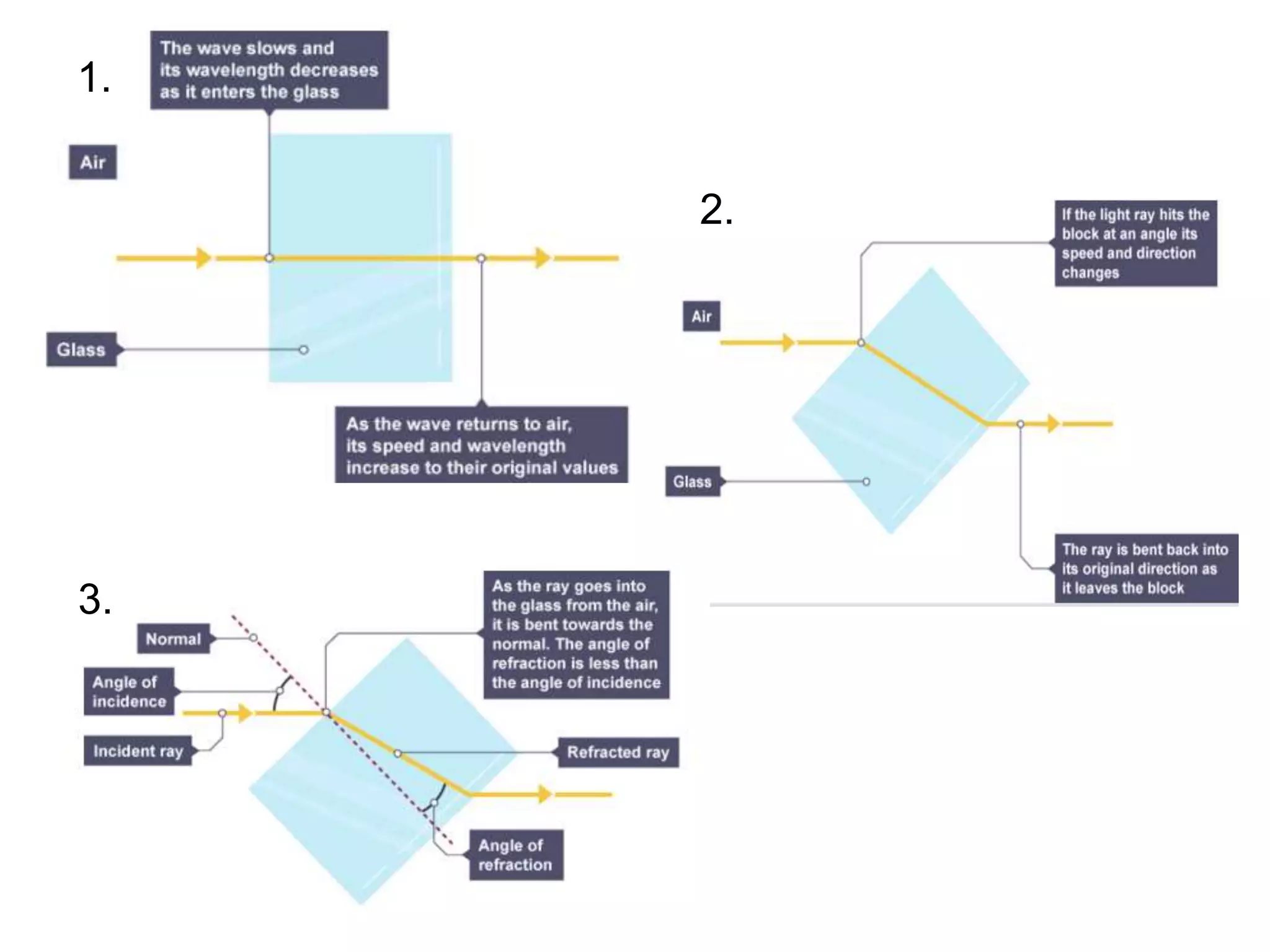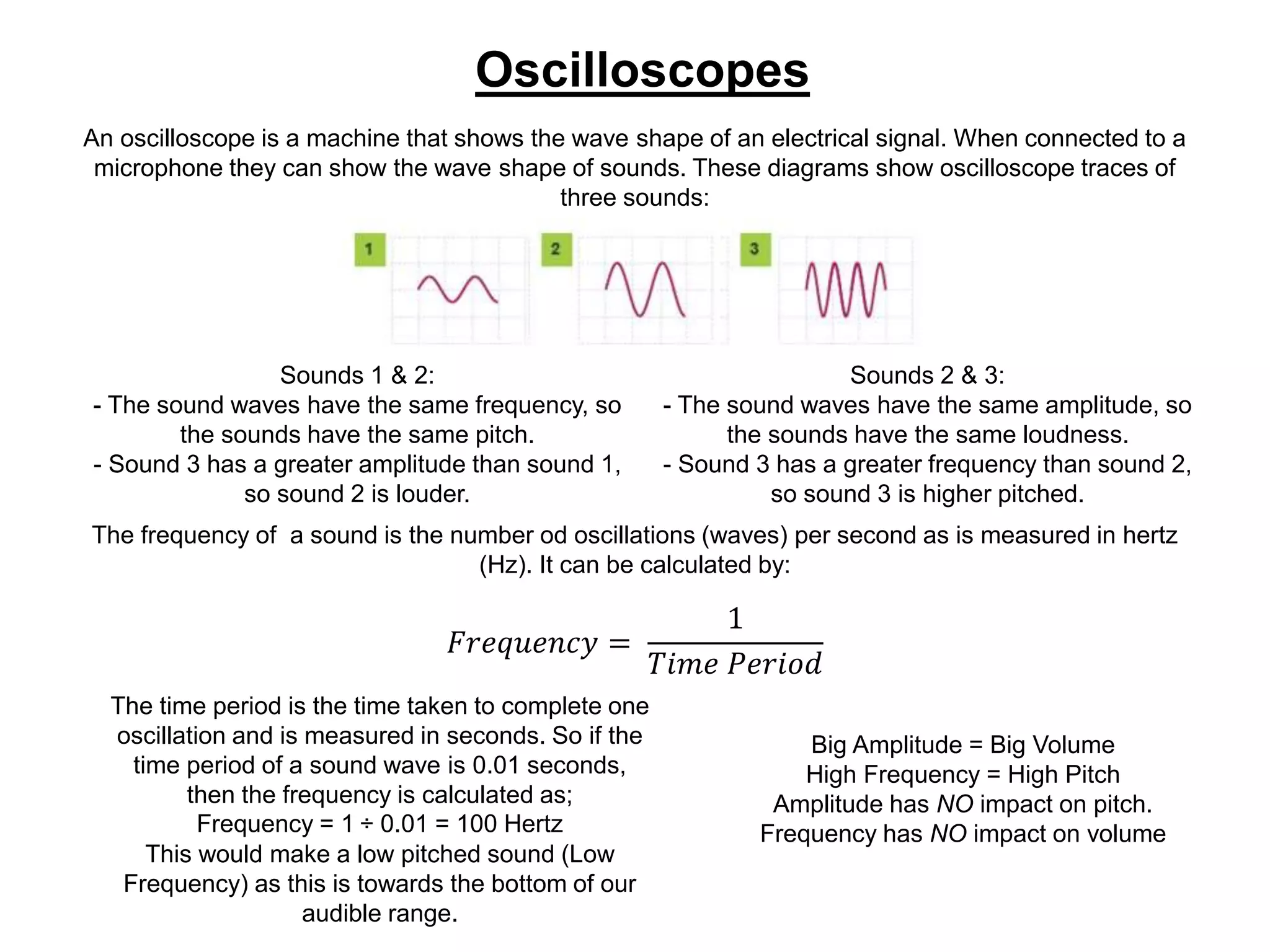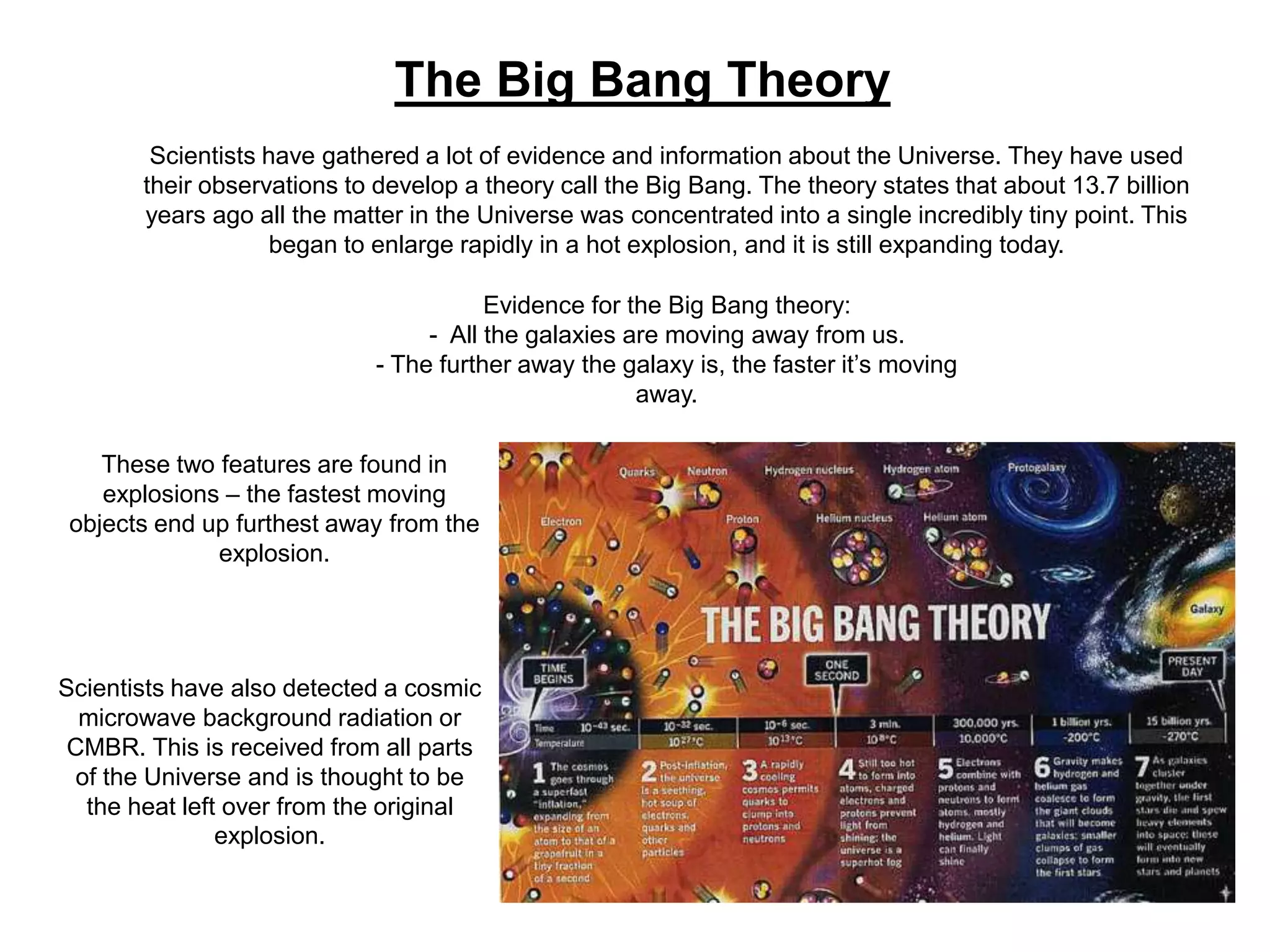This document provides an overview of wave physics, detailing types of waves (transverse and longitudinal), their properties (wavelength, amplitude, speed, frequency, and period), and how they transfer energy. It explains the behavior of light and sound waves, including reflection, refraction, diffraction, and the concept of red-shift in relation to the expanding universe and the Big Bang theory. Key formulas related to waves and measuring them, as well as the function of oscilloscopes in visualizing sound waves, are also presented.
















